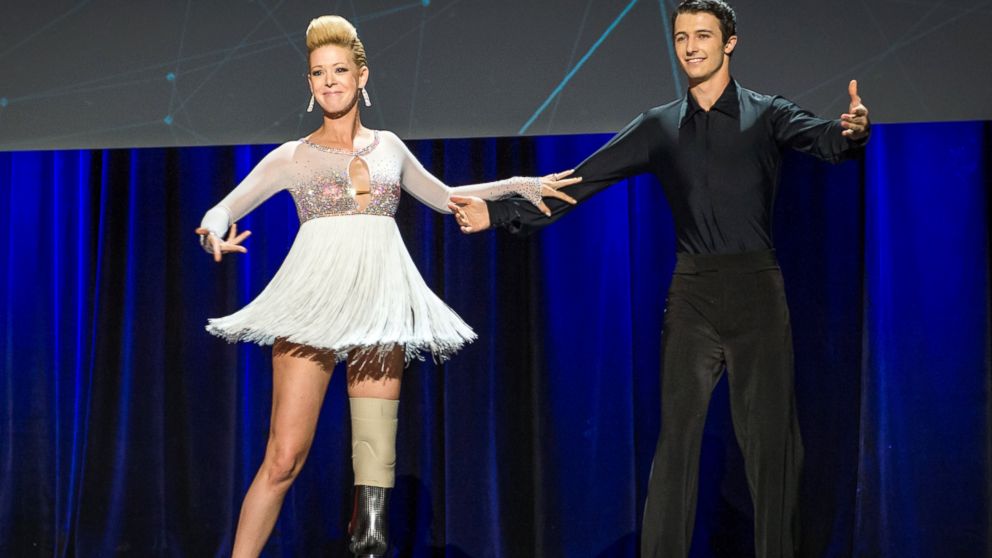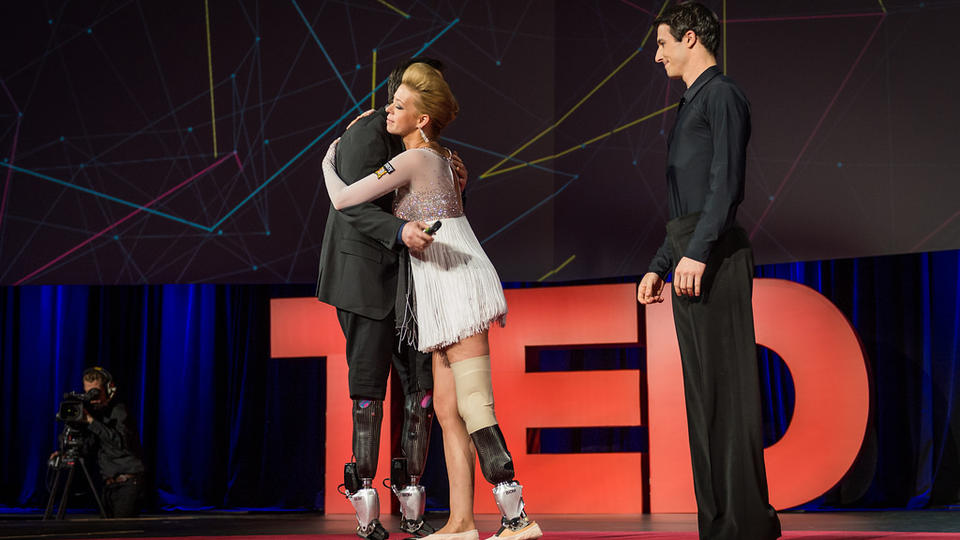During the Boston bombing last year, 16 people lost limbs. As we rallied around the city of Boston, sending money and creating memorials, engineers and experts began the project of building better and more effective prosthetic limbs for those survivors, many of whom were runners or otherwise active. These new advances led to the creation of a unique bionic leg, designed for and shown off at TED2014 by Boston Bombing survivor and professional ballroom dancer Adrianne Haslet-Davis.

With help from supportive funds for those injured in the bombing, MIT Media Lab Biomechatronics Group director Hugh Herr created a unique bionic leg, one designed specifically to help Haslet-Davis dance again.
After gathering data of her leg, Herr invited similarly built dancers to his lab, which was fitted with sensors. When these people danced, the sensors were able to track exactly how they moved, and how those movements affected the dance floor. Using the data from these sensors, Herr was able to infuse the characteristics of dance into chips on Haslet-Davis’ bionic leg.
“It's responsive in a way that's appropriate biomechanically,” said Herr on Discovery. “It doesn't simply output a traditional trajectory that she would have to keep up with like a wind-up toy. It's more like she is the lead and the limb is the partner.”

Haslet-Davis hugs Hugh Herr at TED
Herr used a “smart” material to create the prosthetic limb, which had to be able to move like human flesh and bone. This material can relax or stiffen depending on the voltage coming from the human body, very like how flesh and blood limbs respond to nerve signals.
“My first dance happening to be so near the anniversary of the marathon bombing stands as a reminder that I'm a survivor, not a victim,” said Haslet-Davis of her appearance at TED in a statement.
The bombing “broadened the horizon” of the prosthetic field and led to incredible advances, but there are still problems to overcome, like the fact that people tend to need a different prosthetic for different activities. So far, prostheses that would allow someone to go from dancing or running to grocery shopping does not exist, but the advancements made in mind-controlled prostheses are sure to help with daily living.
Source Discovery
Advertisement





